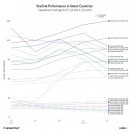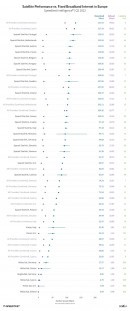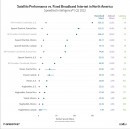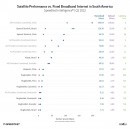SpaceX is rapidly expanding its satellite constellation and, at the same time, its Starlink satellite internet service. But this comes at the cost of internet connection speed, as a recent Ookla study revealed.
Starlink satellite internet service is live across all seven continents, as Elon Musk revealed a month back. SpaceX recently celebrated its first millionth dish antenna sold to customers, but, believe it or not, this is not good news for Starlink users. That’s because the service gets more clogged with every new customer enrolled in one of the Starlink plans. Despite a busy launch schedule, SpaceX can barely keep up with the demand for its satellite internet service.
This has led to a drop in internet connection speeds in the year’s second quarter, as revealed by the Ookla study. This is interesting, as an earlier study version showed that the Starlink speeds were improving across the board. Nevertheless, as more people come online, there’s only so much bandwidth available, hence the degraded performance.
Ookla’s Speed Intelligence study shows that the media download speeds fell between 9% and 54% from Q2 2021 to Q2 2022 in every country surveyed. Ookla analyzed internet satellite performance during Q2 2022 in Europe, Oceania, North America, and South America and included data for other satellite providers like Starlink, HughesNet, and Viasat. Upload speeds also slowed on Starlink. Latency faired a little better, remaining relatively flat, although high compared to fixed broadband.
Starlink in Puerto Rico proved the fastest satellite internet in North America during Q2, with a median download speed of 112.22 Mbps. It was also faster than the country’s fixed broadband providers combined, which topped at 74.80 Mbps. The United States faired worse, with Starlink averaging 62.5 Mbps download, while fixed broadband saw more than double the speed, at 150.12 Mbps download.
Starlink rules the market in Europe, being faster than fixed broadband in 16 countries. In 10 countries, Starlink reached speeds of over 100 Mbps. In contrast, fixed broadband only achieved median download speeds of over 100 Mbps in six countries. Romania and Spain were the only countries with fixed broadband that beat Starlink for the fastest median download speed, achieving 131.41 Mbps and 127.19 Mbps, respectively.
This has led to a drop in internet connection speeds in the year’s second quarter, as revealed by the Ookla study. This is interesting, as an earlier study version showed that the Starlink speeds were improving across the board. Nevertheless, as more people come online, there’s only so much bandwidth available, hence the degraded performance.
Ookla’s Speed Intelligence study shows that the media download speeds fell between 9% and 54% from Q2 2021 to Q2 2022 in every country surveyed. Ookla analyzed internet satellite performance during Q2 2022 in Europe, Oceania, North America, and South America and included data for other satellite providers like Starlink, HughesNet, and Viasat. Upload speeds also slowed on Starlink. Latency faired a little better, remaining relatively flat, although high compared to fixed broadband.
Starlink in Puerto Rico proved the fastest satellite internet in North America during Q2, with a median download speed of 112.22 Mbps. It was also faster than the country’s fixed broadband providers combined, which topped at 74.80 Mbps. The United States faired worse, with Starlink averaging 62.5 Mbps download, while fixed broadband saw more than double the speed, at 150.12 Mbps download.
Starlink rules the market in Europe, being faster than fixed broadband in 16 countries. In 10 countries, Starlink reached speeds of over 100 Mbps. In contrast, fixed broadband only achieved median download speeds of over 100 Mbps in six countries. Romania and Spain were the only countries with fixed broadband that beat Starlink for the fastest median download speed, achieving 131.41 Mbps and 127.19 Mbps, respectively.






